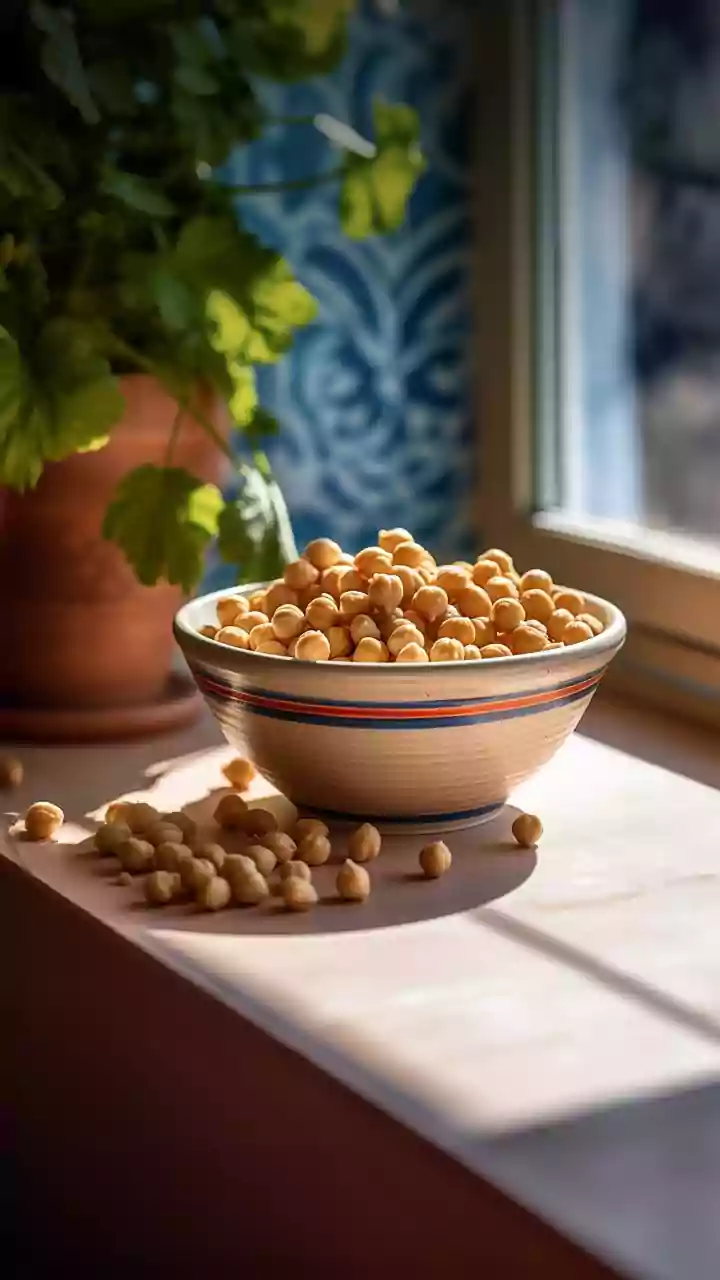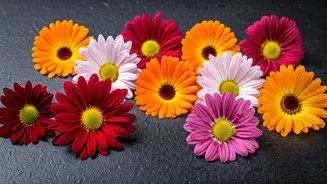Chrysanthemum's Grandeur
Chrysanthemums, often called mums, are a November staple, known for their vibrant colors and wide variety. These flowers come in diverse shapes, from single-petaled
daisies to elaborate pompons, and display hues including red, yellow, purple, and white. They thrive in well-drained soil and prefer full sun, needing regular watering. With proper care, chrysanthemums can brighten gardens and homes throughout the autumn months. Their versatility extends beyond aesthetics; they’re frequently used in bouquets and floral arrangements, representing longevity and joy in some cultures. Planting mums in early spring allows them ample time to establish, ensuring a profuse bloom come November.
The Amaryllis Allure
Amaryllis, with their trumpet-shaped blooms, are a November favorite, particularly when forced to bloom indoors. These striking flowers, often red, pink, or white, stand tall on thick stems, making a dramatic statement. Amaryllis bulbs require a warm, sunny location and well-draining soil to flourish. Watering should be moderate until the flower stalk emerges, then increased. After blooming, the plant can be kept indoors or outdoors depending on the climate. The Amaryllis symbolizes success and beauty, making it a popular choice for gifts during the holiday season. Proper bulb selection is crucial; choose firm, large bulbs for the best results. Regular feeding with a balanced fertilizer during the growing season is beneficial to maximize bloom potential.
Camellias in Bloom
Camellias are elegant shrubs that offer a display of vibrant blooms in late autumn and winter, including November, depending on the variety. Camellias, often with glossy green leaves, come in various shades, from pure white to deep red, and feature both single and double-petaled forms. They thrive in slightly acidic, well-draining soil and prefer partial shade. Regular watering and mulching are crucial, especially during dry spells. Camellias can be used in landscapes as focal points or hedges and are recognized for their resilience. Pruning after flowering is recommended to maintain shape and encourage new growth. They symbolize admiration, perfection, and good fortune, making them a beautiful addition to gardens and floral arrangements.
The Pansy’s Palette
Pansies are charming, cold-hardy annuals that add a splash of color to gardens during the cooler months, including November. They come in a wide range of colors and patterns, from solid hues to intricate bicolors and tricolors. Pansies prefer well-draining soil and full sun to partial shade. Regular watering and deadheading spent blooms help prolong the flowering season. They make excellent border plants, ground covers, or additions to container gardens. Pansies are associated with thoughts and remembrance, adding a touch of sentiment to any garden. Planting them in well-prepared soil and applying a balanced fertilizer can enhance their performance and vibrancy.
Petunia’s Persistence
Petunias, although often associated with warmer months, can continue to bloom in November, especially in milder climates. These versatile annuals come in a wide range of colors and forms, including cascading and upright varieties. Petunias require well-drained soil and full sun, and regular watering is crucial. Deadheading spent flowers encourages more blooms, extending their display. They are popular choices for hanging baskets, window boxes, and ground cover. Petunias are known for their resilience and ability to thrive in various conditions, adding a touch of elegance to any garden setting. Regular fertilization promotes abundant blooms throughout the season.
Viola's Velvet Touch
Violas, similar to pansies but often smaller, offer a delicate touch with their velvety petals during the cooler months, including November. Violas come in diverse colors and patterns, often featuring a distinct center “eye.” They thrive in well-draining soil and prefer partial shade, making them ideal for cooler climates. Regular watering and deadheading promote continuous blooming. They are perfect for borders, rock gardens, and container planting. Violas symbolize modesty and faithfulness, adding a subtle charm to any garden. Ensuring good air circulation and protecting them from extreme weather conditions will help violas thrive.
The Calendula Charm
Calendula, also known as pot marigold, blooms in late autumn, including November, with vibrant orange and yellow flowers. These cheerful flowers are relatively easy to grow, preferring full sun and well-draining soil. They are known for their medicinal properties and are used in skincare products. Regular watering and deadheading extend the blooming period. Calendulas attract beneficial insects, making them a great companion plant. They also add a touch of color to vegetable gardens and ornamental borders. Calendulas symbolize joy and healing, making them a delightful addition to any garden.
Snapdragon's Structure
Snapdragons, with their unique, dragon-like flowers, can bloom in November in warmer climates, offering a vertical accent in gardens. These plants come in a range of colors, from pastels to vibrant shades. They prefer full sun to partial shade and well-draining soil. Regular watering and deadheading promote continued blooming. Snapdragons are great for cutting gardens, adding height and interest to floral arrangements. They are considered symbols of grace and strength, bringing a touch of architectural elegance to landscapes. Pinching back the stems encourages bushier growth and more flowers.
Cyclamen's Curves
Cyclamen, with their delicate, heart-shaped leaves and unique, upward-facing flowers, provide color and interest during the colder months, including November, particularly indoors. These plants come in a variety of colors, including pink, red, and white. They prefer bright, indirect light and well-draining soil. Proper watering is essential; avoid overwatering and water from below to prevent rot. Cyclamen symbolizes lasting affection and is a popular gift during the holiday season. They make beautiful additions to indoor settings and are relatively easy to care for, adding a touch of elegance to any space. Providing cool temperatures and avoiding direct sunlight helps ensure their longevity.
The Aster's Appeal
Asters, with their daisy-like flowers, bloom in late summer and fall, offering a burst of color in November, depending on the variety and climate. They come in a wide range of colors, including purple, pink, and white. Asters prefer full sun and well-draining soil. Regular watering and deadheading encourage prolonged flowering. They are excellent choices for adding late-season color to gardens and attracting pollinators. Asters symbolize patience and love, adding a touch of beauty to any landscape. Providing good air circulation and protecting them from pests and diseases will help asters thrive. Choose varieties suited to your local climate for optimal performance.













